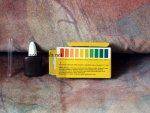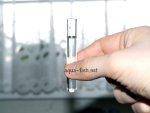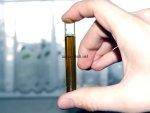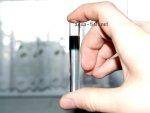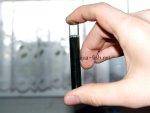How to Understand, Measure, and Adjust Aquarium pH Like a Pro
Quick Navigation – Explore This Guide
- 🧪 Why pH Matters in Aquariums
- 🔍 What Is pH and How It Works
- 🧪 How to Measure pH
- 🐟 pH Preferences by Fish Species
- ⬆️ Safe Ways to Raise pH
- ⬇️ Safe Ways to Lower pH
- ⚖️ Why Stability Is More Important Than Perfection
- 🧪 Carbonate Hardness (KH) Explained
- ❓ FAQ and Troubleshooting
- ✅ Final Summary and Related Articles
What You’ll Learn in This Guide
Keeping your aquarium’s pH stable doesn’t have to be difficult. Based on 30 years of hands-on fishkeeping experience, this guide walks you through what pH means, how to test it properly, and how to adjust it safely—whether it’s too high or too low. We explain the role of carbonate hardness (KH), offer natural and chemical solutions, and help you avoid common mistakes.
Whether you’re raising Discus, Guppies, or African Cichlids, understanding pH is key to a healthy tank. We also include a troubleshooting section and real tips based on experience. Scroll down or use the quick links above to jump to any topic.
🧪 Introduction: Why pH Matters in Aquariums
In aquariums, pH is a key water parameter that affects both fish and plants. It tells us whether the water is acidic, neutral, or alkaline. While each species has its own preferred range, stability is more important than hitting a “perfect” number.
Fish can adapt to slightly “imperfect” pH levels, but sudden swings can be deadly. A tank with stable pH, even if slightly too high or low, is often safer than a tank where values fluctuate daily.
There is no universal ideal pH. Some species from South America thrive in soft, acidic water (pH around 6), while African cichlids prefer hard, alkaline water (pH around 8 or higher). Community fish often tolerate a broader range, especially if they’re tank-bred.
For beginners, it’s best to choose fish that match your tap water’s natural pH. Adjusting pH constantly can become a hassle and create instability. It’s easier to build your aquarium around your local water conditions.
Understanding how pH behaves, what influences it, and how to monitor it is crucial for long-term success in fishkeeping. This guide will help you maintain a stable and safe aquatic environment, regardless of the species you keep.
🔍 What Is pH and How It Works
The term pH (potential of hydrogen) tells us how acidic or alkaline the water is. The scale goes from 0 to 14. A pH of 7 is neutral. Values below 7 mean the water is acidic, while values above 7 mean it’s alkaline (or basic).
For example, lemon juice has a low pH (acidic), and soap has a high pH (alkaline). Fish and aquatic plants don’t live in extremes, but they do have preferences based on their natural habitats.
In aquariums, it’s not just the pH number that matters — it’s how stable that number is over time. And this is where carbonate hardness (KH) comes in. KH is the water’s ability to resist sudden pH changes. This process is called buffering.
If KH is too low (usually below 3 dKH), pH becomes unstable and can swing quickly. A stable KH of 4–6 dKH is enough to buffer most aquariums, keeping the pH steady and safe for fish.
It’s also important to distinguish between pH and general hardness (GH or dGH). While pH measures acidity, GH refers to the total amount of dissolved minerals, mainly calcium and magnesium. Some fish need soft water (low GH), while others thrive in harder water, but that’s separate from acidity or alkalinity.
In short, understanding pH means also paying attention to KH (for stability) and GH (for mineral content). All three influence the health and comfort of your aquarium’s inhabitants.
🧪 How to Measure pH in an Aquarium
Measuring pH is one of the most important routine tasks for any aquarium owner. It helps you prevent stress, illness, and even death in your fish caused by unstable water conditions.
Types of pH Tests
- Drop test kits (liquid tests): Very accurate and affordable. You add a few drops of a chemical to a water sample and compare the color change to a chart.
- Electronic pH meters: Provide digital readings and are very precise. They’re ideal for experienced aquarists but must be calibrated regularly.
- Test strips: Quick and easy to use, but usually less accurate. Useful for fast checks but not recommended for critical measurements.
Step-by-Step pH Testing
Here’s how to test your aquarium’s pH using a drop test kit:
- Use a clean test tube or small glass container.
- Fill it with water from your aquarium (don’t touch the inside of the tube).
- Add the recommended number of drops from the test kit bottle (usually 3–5).
- Cap the tube and shake gently to mix.
- Compare the color of the water to the chart provided by the kit.
When and How Often to Test
It’s best to test the pH at the same time of day each time — preferably in the morning before the lights turn on. This helps avoid confusion caused by natural daily fluctuations.
As a rule of thumb, test your pH at least once per week. Also test before:
- Introducing new fish or plants
- Changing the water source
- Adjusting carbonate hardness (KH)
- Adding pH-altering substances like driftwood, coral, or chemicals
Regular monitoring keeps your tank stable and helps prevent emergencies before they happen.
🐟 Recommended pH Ranges for Popular Fish Species
Not all fish thrive in the same water conditions. Each species has evolved to live in environments with specific pH levels. While many aquarium fish can adapt to a wide range, keeping them within their preferred range helps them stay healthy and stress-free.
📉 Fish That Prefer Acidic Water 💧 (pH below 7.0)
- Discus (Symphysodon spp.): Ideal pH is between 6.0 and 6.5. They thrive in soft, acidic water, especially wild-caught specimens.
- Ram Cichlids (Mikrogeophagus ramirezi): Prefer pH between 5.5 and 6.8. Sudden pH changes can cause stress or illness.
- Apistogrammas: These dwarf cichlids from South America often prefer slightly acidic water, typically 6.0–6.8.
⚖️ Fish That Prefer Neutral Water (around pH 7.0)
- Angelfish (Pterophyllum scalare): Do well in slightly acidic to neutral water (6.8–7.2).
- Corydoras Catfish: Tolerate 6.5–7.4, but stable neutral pH is ideal for most species.
- Tetras: Neon, Rummy-nose, and other popular tetras thrive around pH 6.8–7.2, depending on the species.
📈 Fish That Prefer Alkaline Water 🏔️ (pH above 7.0)
- Livebearers (Guppies, Mollies, Swordtails, Platies): Prefer slightly alkaline conditions, typically 7.2–8.0.
- African Cichlids: Especially those from Lake Malawi and Lake Tanganyika prefer pH levels between 7.8 and 8.5 due to mineral-rich natural habitats.
- Goldfish: Do best around pH 7.2–7.6, with good water circulation and buffering.
✅ Tip: When building a community tank, choose species with similar pH preferences to avoid long-term compatibility issues.
⬆️ How to Increase pH Safely
Raising the pH in an aquarium must be done gradually to avoid shocking your fish. Always test the water before and after each step, and avoid making multiple changes at once.
🌿 Natural Methods
- Limestone Rocks: Adding limestone slowly raises the pH by releasing calcium into the water. Smooth, flat rocks are best to avoid injuring fish.
- Crushed Coral or Seashells: Place a mesh bag filled with crushed coral or snail shells into your filter chamber. These materials dissolve slowly, increasing both pH and carbonate hardness (KH).
- High-pH Holding Tank: You can maintain a separate water container (without fish) containing coral or limestone. Over time, the water reaches a pH of 8–9. Use this water during water changes, but test before each use to avoid sudden spikes.
🧪 Chemical Methods
- Baking Soda (Sodium Bicarbonate): A fast-acting option. Mix 1 teaspoon per 50 liters (13 US gallons) of aquarium water in a cup of chlorine-free water, then add gradually. Test pH and KH after 10 minutes.
- Commercial pH Increasers: Available in pet stores, but many do not increase carbonate hardness, which may lead to temporary results. Use with caution and always read the label.
⚠️ Warning: Sudden or large increases in pH can harm or even kill fish. Aim to adjust pH by no more than 0.3–0.5 units per day.
✅ Always test water parameters after each adjustment and allow time between steps. It’s better to move slowly than to risk fish health.
⬇️ How to Lower pH Safely
Lowering the pH in your aquarium can be more challenging than raising it. The process should always be gradual to avoid stressing your fish or disrupting biological balance.
🌿 Natural Methods
- Peat Moss: Adding aquarium-safe peat to your filter slowly releases tannins, which lower pH by softening the water. Make sure the peat is chemical-free and aquarium-safe.
- Driftwood: Naturally releases acids into the water, helping reduce pH levels. The effect depends on the type of wood, tank volume, and existing water chemistry.
- Indian Almond Leaves (Catappa): These leaves not only lower pH but also have antifungal and antibacterial properties. Let them soak in the tank or steep them separately for controlled use.
💧 Reverse Osmosis (RO) Water
RO units remove almost all dissolved minerals, producing very soft and low-pH water. This method is ideal for fish that require acidic water (e.g., Discus, Rams), but it comes with a catch:
- RO water must be remineralized before use. Without added minerals, it lacks buffering capacity and can cause unstable pH.
- Remineralizing agents are available commercially and should be chosen based on the species in your tank.
- RO water is best used for partial water changes rather than full replacement unless you're experienced.
⚗️ Commercial Products
- There are many chemical solutions for lowering pH, but these are often temporary fixes.
- Such products rarely adjust carbonate hardness (KH), so the pH may quickly rise again.
- Use commercial products only in emergencies or as a last resort, and always follow dosing instructions carefully.
⚠️ Important: Like with increasing pH, avoid sudden drops. Never change pH by more than 0.3–0.5 units per day. Always test both pH and KH after each step.
✅ Tip: Combine natural and RO methods for better control, and introduce changes slowly over several days.
⚖️ Stability Over Perfection
Many aquarists obsess over achieving the "perfect" pH, but the truth is simple: stability is more important than precision. Fish can adapt to slightly non-ideal conditions, but they struggle with sudden changes.
🚨 Why Sudden pH Changes Are Dangerous
When pH shifts too quickly — even by just 0.5 units in a day — it can cause:
- Osmotic stress (difficulty maintaining internal balance)
- Gill irritation or burns
- Weakened immune system and increased disease risk
This applies especially when using chemical adjusters or when forgetting to test KH (carbonate hardness).
🧘♂️ Focus on a Safe, Consistent Range
If your tap water naturally settles at a pH of 7.4, there's no need to force it down to 6.5 just because a chart says so — unless you're keeping highly specialized species.
Instead, aim for consistency. Fish from community tanks, especially captive-bred varieties, are far more tolerant than often assumed.
🔧 How to Balance Fish Needs with Your Water Conditions
- Research your fish’s preferred pH range before buying — not just a single “ideal” value.
- Choose fish that are adaptable to your water source, rather than constantly modifying water for them.
- If pH adjustment is truly needed (e.g., breeding conditions), use separate tanks or gradual methods.
✅ Tip: Always test both pH and KH together. A stable KH level will help prevent unpredictable pH swings.
🧪 Carbonate Hardness (KH) and Its Role in pH Stability
Carbonate hardness (KH) is one of the most overlooked yet essential water parameters in aquariums. It acts as a buffering system — helping your tank resist sudden pH changes and maintain a stable environment for fish and plants.
🔍 What Exactly Is KH?
KH measures the amount of carbonates (CO₃²⁻) and bicarbonates (HCO₃⁻) dissolved in your water. These compounds absorb excess acids in the aquarium, which helps prevent rapid drops in pH.
Think of KH as a “shock absorber” for your water chemistry — the higher the KH, the more stable your pH will be.
🧴 How to Measure KH
KH is measured in degrees of carbonate hardness (°dKH), and most test kits include simple instructions:
- Fill the test tube with aquarium water.
- Add one drop of test reagent at a time, gently shaking after each drop.
- Count the drops until the color changes. Each drop equals 1°dKH.
🟢 Ideal KH range: For most freshwater aquariums, a KH level between 4°–8°dKH is perfect. Lower values can lead to pH swings, while higher values are better for hard-water species (like African cichlids).
🔼 How to Increase KH
- Add crushed coral to the filter or substrate.
- Use baking soda (sodium bicarbonate) — 1 tsp per 50 liters can raise KH and pH slightly.
- Use commercial KH buffers designed for aquariums.
🔽 How to Lower KH
- Mix in RO (reverse osmosis) water to dilute carbonates.
- Add driftwood or peat, which release tannins and reduce KH over time.
⚠️ Tip: Always adjust KH gradually. Sudden changes can destabilize your pH and stress your fish.
❓ FAQ and Troubleshooting
📉 Why does my aquarium pH keep dropping?
If your pH keeps going down over time, it's often due to low carbonate hardness (KH). Without enough buffering capacity, natural processes like fish respiration, plant decay, or biological filtration can slowly acidify the water. Try testing and increasing KH using crushed coral or baking soda.
🌅 My pH is lower in the morning and higher in the evening. Is that normal?
Yes! This is called a diurnal pH swing and it’s completely natural, especially in planted tanks. During the day, plants consume CO₂ (which is acidic), causing pH to rise. At night, they stop consuming CO₂, which allows it to accumulate, slightly lowering the pH. These swings are usually mild and harmless.
🐠 My fish are acting weird — could it be pH related?
Possibly. Sudden changes in pH — or values far outside a fish’s preferred range — can cause stress, gill irritation, darkened coloration, clamped fins, or unusual swimming. However, always check other water parameters too (like ammonia, nitrite, temperature), as similar symptoms can have multiple causes.
🔀 Can I mix fish with different pH requirements?
You can, but it depends. Many tank-raised fish adapt to a wider pH range than their wild counterparts. If you maintain a stable pH near 7.0 and avoid extremes, most community species can coexist. However, avoid mixing fish with drastically different needs — like soft-water Amazon species and hard-water African cichlids — in the same tank.
💡 Need more help?
If your question wasn’t answered here, scroll to the bottom of the article and use the contact form — we’ll be happy to help!
✅ Conclusion
Maintaining proper pH in your aquarium doesn’t have to be difficult. While it's an important part of fish and plant health, it’s more about stability than hitting a “perfect” number. Most tropical fish thrive in a stable environment, even if the pH isn’t exactly what you see in books or online guides.
Always test regularly, make changes gradually, and tailor your tank to the species you keep. Whether you're dealing with acidic South American biotopes or alkaline African cichlid setups, understanding your water is the key to success.
💬 Got questions or feedback?
We’re here to help! Scroll to the bottom and use the contact form to ask your questions — your curiosity helps us improve this resource. We regularly update it based on reader feedback and real-world aquarium experience.
🔗 Related Articles You Might Find Helpful:
- Understanding and Adjusting Water Hardness
- When to Use Reverse Osmosis in Aquariums
- Using Peat in Aquariums
- Natural Balance and Regular Maintenance
Thank you for reading, and happy fishkeeping! 🐟🌿

